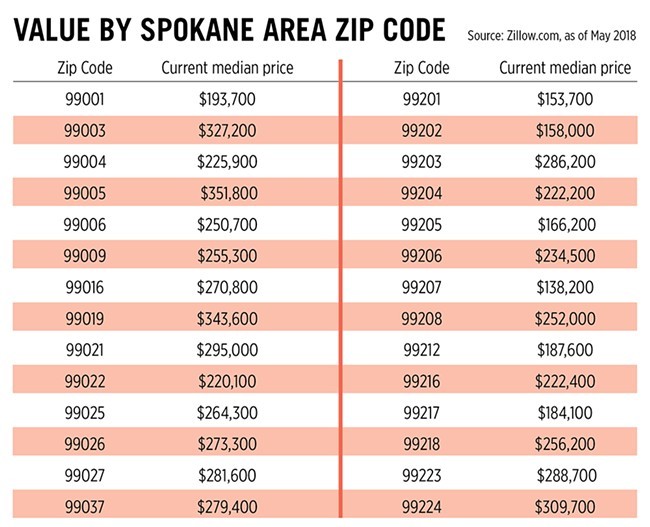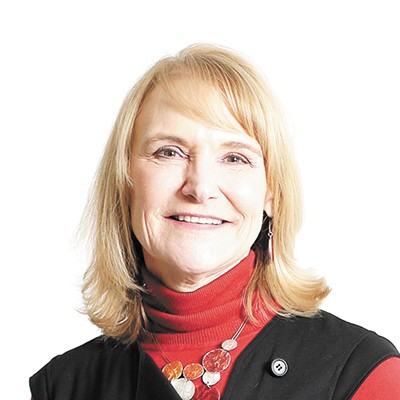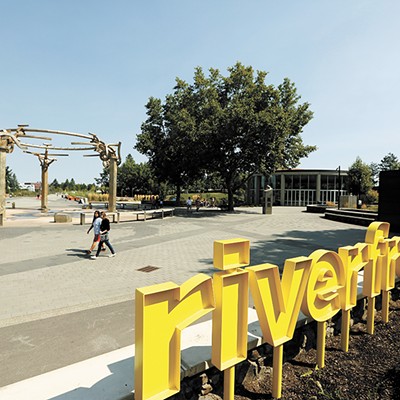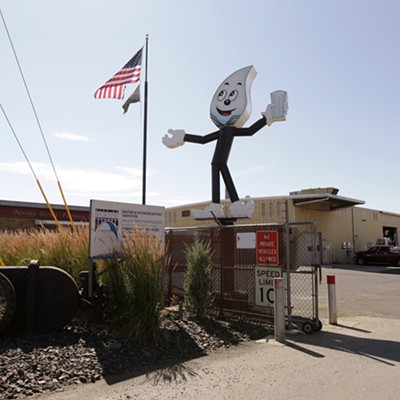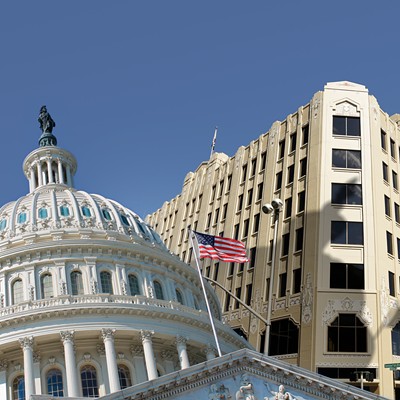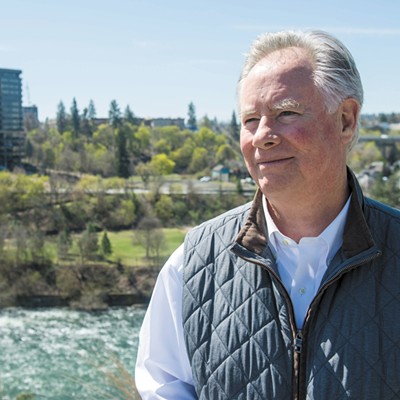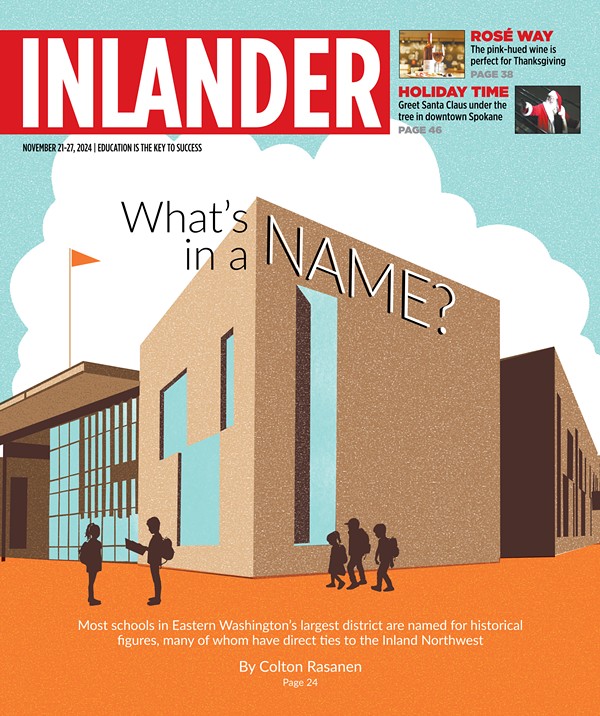The Inland Northwest was slow to grow during the past decade.
But with the West Coast booming and thousands of people finally realizing how gorgeous the region actually is, expect some very rapid growth in the next few decades. Here are a few of the places where the growth is likely to be the strongest.
POST FALLS
Consider this mind-blowing stat: By 2040, Post Falls is estimated to have over 100,000 people, according to Post Falls planning manager Jon Manley. That's three times larger than it is currently, and about twice the current population of Coeur d'Alene.
The growth is already happening, possibly because Post Falls is in an ideal spot: Your spouse can work in Spokane Valley and you can work in Coeur d'Alene, and the drive is reasonable for both of you.
"I do know that we are growing quite rapidly," Manley says. "It's tough to keep up with at the building department." Three years ago they were only growing at about 2.3 percent annually. This year, they could be over 7 percent.
"It's pretty much getting scattered through all of Post Falls," Manley says.
THE WEST PLAINS
"On the West Plains we're seeing quite a bit of growth," says Spokane County Commissioner Al French "I'm looking at the potential of 5,000 and 5,200 new jobs in the West Plains in the next 24 months."
While much of that is anticipated to come from the Amazon distribution facility, the rest is coming from projects that still haven't been announced. And then to that, add two more squadrons of refueling tankers to Fairchild Air Force base, adding around 2,000 new airmen.
The question isn't whether the West Plains will grow — it's whether there's enough room.
"We're talking to cities of the Airway Heights, Medical Lake and Cheney — where are we going to put those people at?" French asks. "I'm actively trying to look at, how do we address that?"
NORTHEAST SPOKANE
Arthur Whitten, director of government affairs for the Spokane Home Builders Association, notes that there's another economic engine slowly being constructed in North East Spokane.
The North Spokane Corridor may still be a ways off from completion — the bulk of the construction won't be done until 2027 — but the impact on the Hillyard and northeast Spokane area could be considerable. Having freeway access could become a boon to industry, and more jobs means more need for nearby housing.
In particular, there's the Beacon Hill area that's primed for growth, Whitten says.
RATHDRUM PRAIRIE
When Avista Utilities economist Grant Forsyth crunches the population projection numbers, he sees North Idaho as ready to explode.
"From Rathdrum Prairie, down to Coeur d'Alene, that area is starting to fill in," Forsyth says. Kootenai County is growing faster than Spokane County, he says. A lot of people, he speculates, want the advantages of the Inland Northwest without necessarily feeling the need to live in an urban center.
"I think the word has gotten out that there's a lot of advantages if you can live around Coeur d'Alene," Forsyth says. "Buy a nice house, still have money left over."
THREE THINGS TO KNOW ABOUT THE SELLER'S MARKET
1 Inventory is insanely low
"It's the lowest inventory of the last 23 years," local Realtor Marianne Guenther Bornhoft says. With only about a month and a half supply, it might even be the lowest in decades.
Everything from the overflow from the west side of the state, to the rapidly improving economy, to the popularity of Coeur d'Alene as a tourist destination, to the advertising created by the Spokane-filmed TV show Z Nation has shown a spotlight on the Inland Northwest.
"Spokane has been the best kept secret," Bornhoft says. "Unfortunately it's starting to get out."
So what's a buyer to do?
"They have to be soft on their expectations," Bornhoft says. You may not find a great house immediately. It could take six months to find what you're looking for. But with patience — and a willingness to "fix up" an imperfect house — you may be able to find a surprising deal. Even in this market.
2 2018 could result in a record number of homes sold
The market was hot enough to have people talking about a boom — two years ago. And it's only become hotter since. If trends continue, says Rob Higgins, president of the Spokane Association of Realtors, it could be a record.
And if there's a slow down, he says, it might partially be because the market is too hot. Homeowners thinking about buying may be able to get great prices selling their own house — only to shy away because buying a new house is too expensive.
Another big question mark: The simmering international trade war.
"With what's going on in the national level, with the tariffs on building supplies, that's driving up the cost of housing," Higgins says.
3 Climbing rents will inflame the market further
It's not just that there's too much competition for homes. There's far too much competition for too few apartments. Last year, the vacancy rate plunged further to 0.8 percent, according to a University of Washington statewide apartment market survey. That, inevitably, raises rents. And what happens when middle-income renters start facing a steep price increase? They want to stop paying their landlord and start paying a mortgage.
"Renters are trying to become buyers," Bornhoft says. And that, she says, inflates the housing market even further. (DANIEL WALTERS)
MO' PEOPLE, MO' TRAFFIC
The 30-mile section of Interstate 90 that runs through Spokane (from about the Four Lakes area to the Idaho border) is pushing 45 years old. As the city's population has grown (to 217,108 in 2017 according to census data) so has our use of that stretch of highway. And as traffic volume and vehicle crashes have increased, safety and travel time are the two primary concerns, according to a 2017 Washington State Department of Transportation report.
Among the report's key findings are:
• Crashes have increased 22 percent between 2011 and 2015, to a total of 3,600. They are significant contributors of traffic congestion.
• More crashes than are expected occur on the on-and-off ramps on the stretch of I-90 running through downtown Spokane. This is a result of closely spaced interchanges and short "weave and merge areas."
• DUIs are the leading cause of "high severity" crashes.
• Traffic volume increased by an average of 10 percent from 2012 to 2015.
• The approximately seven-mile segment that runs through downtown Spokane transports about 85,000 vehicles per day.
• Bad weather and bad driving contribute to 84 percent of crashes on Spokane's stretch of I-90. Of those crashes, 59 percent were of the rear-end or sideswipe variety.
SPRINT FROM EAST TO WEST ON THE CENTRAL CITY LINE
At one point, it looked as if President Donald Trump would stand in the way of Spokane's Central City Line (CCL), a six-mile electric bus route running through the heart of downtown. Trump's proposed budget would have slashed the federal Small Starts grant program that the city is banking on for the bulk ($54 million) of the CCL's funding. Earlier this year, Congress stepped in and actually increased the Small Starts budget for 2018 from $241 million to $407 million.
That's a good sign for Spokane, says Spokane Transit Authority spokesman Brandon Rapez-Betty.
"There's been some speculation about the current administration shifting funding at the federal level, but for two years, and what looks like a third year in a row, Congress has increased the funding," Rapez-Betty says, referring to a draft budget showing another increase for 2019, the year for which Spokane intends to apply for funding.
The CCL is anticipated to offer a quicker, more efficient route from the Browne's Addition neighborhood, through the downtown core and the University District to Spokane Community College. Officials estimate that the zero-emission electric buses will provide more than one million rides per year.
Construction is expected to begin as early as 2019, with a completion goal of 2021, Rapez-Betty says.
"That of course is dependant on the federal grant funding," he says. (MITCH RYALS)



